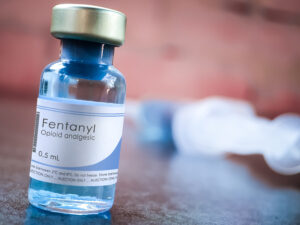
Heroin is a highly addictive substance. Just a few hours after the last use, many users are eager to get their next hit. After prolonged use, users develop a tolerance to the substance and need more of it in order to feel the same high as before and even to function throughout their everyday life.
If the addict stops using heroin abruptly, they will go into withdrawal. Heroin withdrawal symptoms are severe and uncomfortable. They are painful enough that many people avoid withdrawal at all costs, and they can be dangerous.
What exactly are the withdrawal symptoms of heroin? Read on to find out. This article will further help you understand the symptoms of withdrawal from heroin, what to expect during the process, and how treatment facilities can help.
Understanding Heroin Withdrawal
Before we dive into the heroin withdrawal symptoms, let’s talk about why heroin withdrawal occurs in the first place. Heroin is an addictive substance that impacts your brain chemistry. Heroin works by essentially blocking your brain from receiving pain messages. As a result, heroin is a sedative that can lessen feelings of pain, anxiety, and depression.
As you continue to use heroin, the substance alters your brain chemistry. Whenever this occurs, your tolerance increases, as does dependence on the substance. Once you are dependent on the substance, your body requires heroin to function as normal.
If an addict stops using heroin abruptly after prolonged use, their brain chemistry goes haywire in a sense. This change in chemistry results in a number of painful symptoms. As the body is getting rid of the last traces of heroin, these symptoms will peak until they eventually subside.
Heroin withdrawal normally lasts for about one week after the last dose. Symptoms will first appear 6 to 12 hours after the last dose and peak one to three days after. Symptoms normally subside after about a week, but symptoms may remain 10 days after the last use.
Heroin Withdrawal Symptoms
Heroin withdrawal symptoms can range from moderate to severe. Where you are at in the withdrawal process, how long you have been using, and how much heroin is in your system will impact the severity of the withdrawal process. The most common heroin withdrawal symptoms include:
- Sweats
- Insomnia
- Fatigue
- Diarrhea
- Anxiety
- Muscle spasms
- Increased blood pressure
- Increased heart rate
- Intense cravings
- Agitation
- Difficulty concentrating
- Tremors
- Upset stomach
- Vomiting
- Watery eyes
- Muscle aches
- Depression
- Chills
The most severe of these symptoms normally begin one day to three days after the individual’s last use. These symptoms are the most painful and dangerous.
Dangers of Withdrawing from Heroin Alone
Withdrawing from heroin is painful, uncomfortable, and sometimes dangerous. You never want to withdraw from heroin by yourself. If you withdraw by yourself, your detox will be painful and dangerous. In severe cases, withdrawing alone can lead to seizures, stroke, coma, and even death.
For most users, withdrawing alone is also ineffective. Due to the extreme symptoms of withdrawal, most individuals do not make it through the detox process and relapse instead.
Instead of detoxing by yourself, withdraw from heroin safely through medical detox. Medical detox allows you to detox from heroin safely. A medical team will be by your side to monitor vitals and make the process as comfortable as possible through management techniques.
Withdrawal Safely with Elysium Healthcare
Elysium Healthcare is a comprehensive healthcare network that can connect you with a number of rehab facilities. So that your detox is as safe and comfortable as possible, contact Elysium Healthcare today. Our team can help you find a rehab facility where you can safely detox from heroin.








No comment yet, add your voice below!